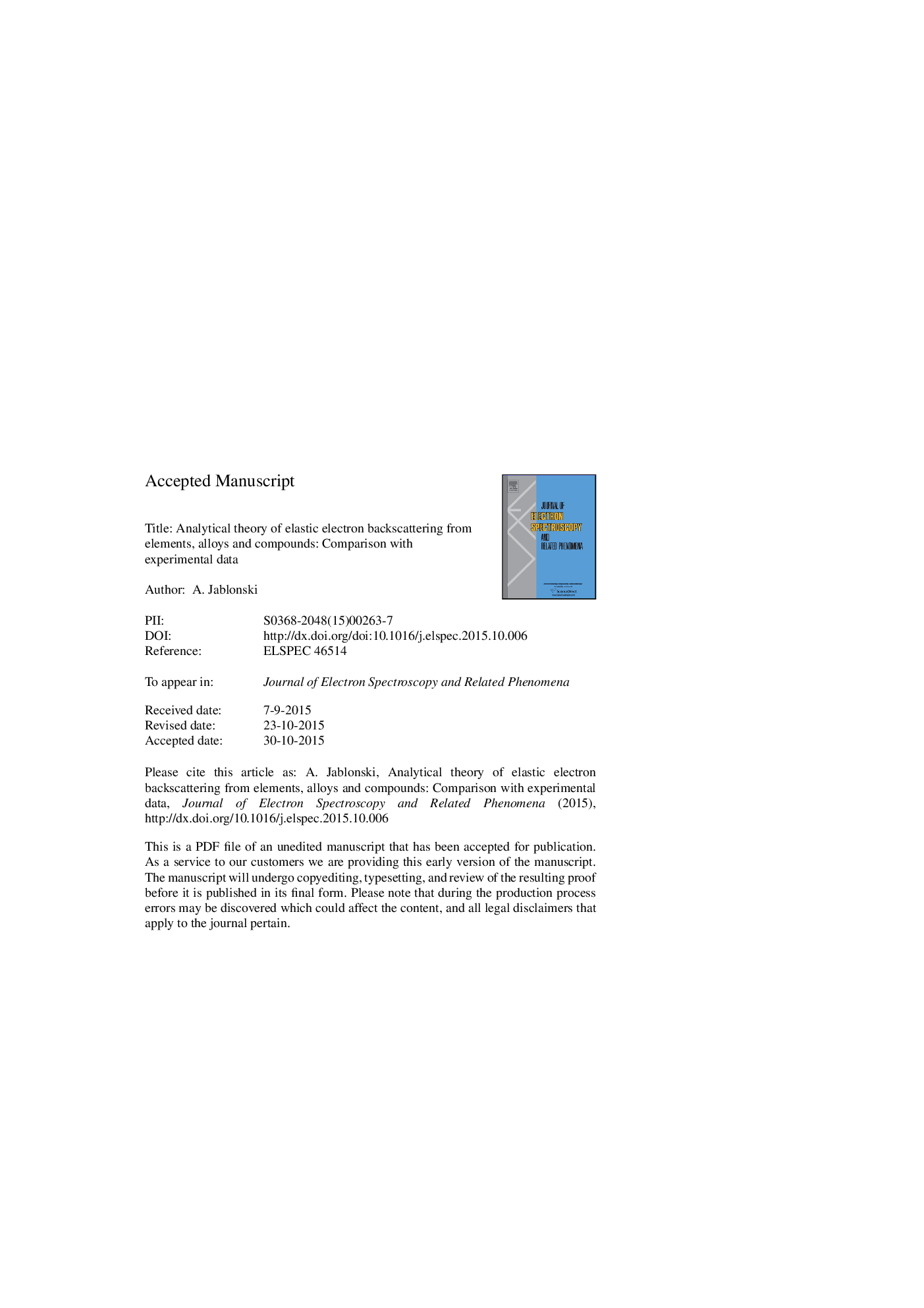| Article ID | Journal | Published Year | Pages | File Type |
|---|---|---|---|---|
| 5395663 | Journal of Electron Spectroscopy and Related Phenomena | 2016 | 77 Pages |
Abstract
Probability of elastic electron backscattering from surfaces is typically calculated from theoretical models implemented in Monte Carlo simulation strategies since this approach is considered to be the most accurate. However, an analytical model proposed by Oswald et al. [J. Electron Spectrosc. Relat. Phenom. 61 (1993) 251], after later modifications, has been found to be of similar accuracy. The relevant analysis was performed for selected elemental solids. In the present work, a possibility to use the analytical formalism in elastic peak electron spectroscopy for determination of the IMFP has been presently studied. For this purpose, two further modifications of the analytical theory were made: (i) creation of a database of parameters facilitating calculations of the angular distribution of electrons after multiple collisions, and (ii) extension of the formalism to solids constituted of different atomic species, i.e. alloys and compounds. Comparison of experimental data (angular distribution of backscattered electrons, ratios of elastic peak intensities) with predictions of both theoretical models proves that these models are of similar accuracy. The IMFPs for elemental solids derived from experimentally measured ratios using the analytical formalism and the Monte Carlo simulations are practically identical. On analysis of IMFPs obtained for 13 elemental solids in the energy range from 200Â eV to 5000Â eV, it has been estimated that the IMFPs obtained from the analytical formalism deviate on average from IMFPs from Monte Carlo calculations by 3.09%. Similar agreement was found for an alloy (Al0.48Ni0.52) and compounds (GaSb, InSb, GaN and SiC) considered here.
Related Topics
Physical Sciences and Engineering
Chemistry
Physical and Theoretical Chemistry
Authors
A. Jablonski,
